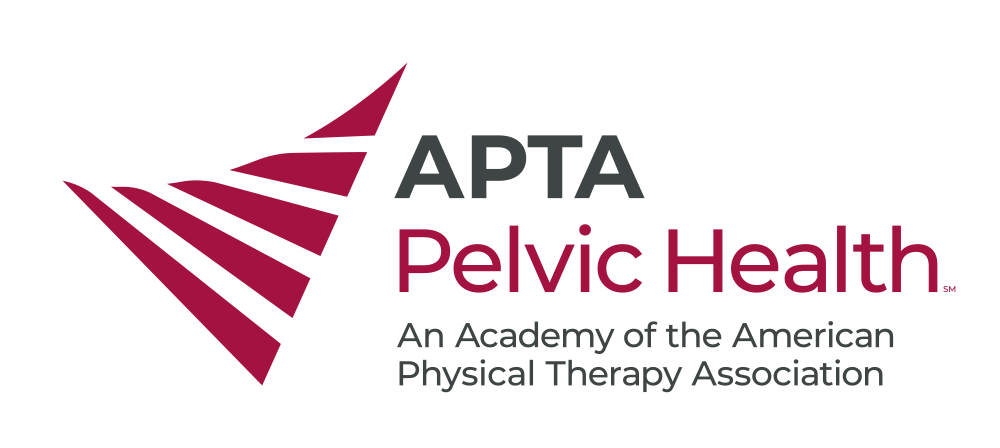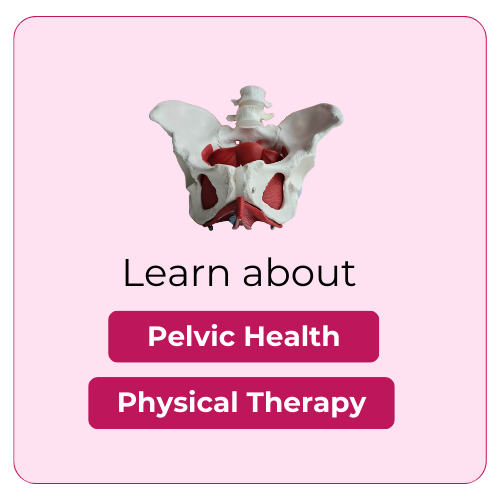Moms Are Athletes, Too: Why I Became a Pelvic Health PT
Let’s rewind to one hot summer day in 2015 when I was sitting in a classroom on a Saturday learning all things women’s health to check the box in our DPT curriculum. To top it off, the A/C was not working. My classmates and I sat shirtless and in sports bras for the duration of the day with fans blasting around us to keep cool. All but a few of us were _not_ planning to become pelvic floor PTs right out of school and most definitely would have preferred to be poolside or napping in an air-conditioned apartment. Certainly, I just had to get through the day, learn the information to pass the written exam, and I would never have to think about how to treat the pelvic floor again, right?
Boy, was I wrong.
If that was the start of my road to becoming a pelvic floor PT, I took close to a decade-long detour before getting back on the map. I started my career gung-ho on becoming a sports physical therapist and accepted a job offer to work in an outpatient sports and orthopedic clinic before I even graduated from PT school. I worked hard to fill my schedule with as many athlete patients as I could and collected sideline volunteer hours in my off-time. As I continued to track my hours needed to sit for the SCS, I also studied for over a year in preparation for the OCS board exam, which I passed in 2019. Less than a year later, I became pregnant, the pandemic hit and my priorities began to change.
Now, age 32, two babies, and a dozen of “mom friends” later, I recognize just how important, yet often overlooked, the pelvic floor is. Many of the ladies in my friend circle experienced pelvic pain or leaking when attempting to return to exercise after birthing their babies. Most knew to seek out treatment from a pelvic floor physical therapist (great progress for our profession!) but some encountered barriers like long waitlists, long travel time, or limited options covered by insurance. As their friend, I wanted to help, but that 1-day class back in PT school did not feel like enough to offer any kind of valuable advice. I started to delve into the world of pelvic floor PT on my own. Before I knew it, I was signed up for my first 8-week virtual pelvic floor course, listening to podcasts and reading books about running and incontinence. I thought this would be enough for me to treat the “basic” patient with pelvic floor symptoms. In truth, I was only skimming the surface and this approach led to feelings of imposter syndrome. Surely, I needed to know more if I wanted to help more women and moms like my friends. In an effort to learn more about the pelvic floor, I enrolled in the Academy of Pelvic Health’s Pelvic Health Level 1 course and haven’t looked back since.
In the past, as an ortho-minded PT, I often overlooked the importance of the pelvic floor and its role in supporting our organs and stabilizing our core during even the smallest of movements. I have since realized that our pelvic floor muscles are a lot like us moms who are currently in the thick of it! They barely get to relax, except when peeing, pooping and birthing a baby (but really, do those even count as a break?) and they take up extra loads when other parts of the body are injured or weak. It’s no surprise then that so many individuals suffer from pelvic floor disorders. What is shocking, however, is how many women think enduring pelvic floor symptoms like incontinence is a normal part of life, or even a right-of-passage into motherhood.
Throughout this journey I have also come to learn that women (and men too, for that matter) with pelvic floor dysfunction are vastly under-served. This part of the body is often seen as too taboo to talk about. As a result, many people likely struggle in silence. Looking back to the beginning of my career, the pelvic floor may have been the missing link for some of my athletes with low back and/or hip pain. They did not know to mention if they were experiencing any pelvic symptoms, and quite frankly I did not know to ask.
While I remain passionate about working with athletes, my definition of “athlete” has broadened over the years to include those much like myself. I once saw an athlete as a young person competing either individually or as part of a sports team with routine seasons of training, games and events. In reality, I now appreciate that an athlete can be anyone from a weightlifter to a hiker to a mom running with a stroller. Many of these athletes are juggling the responsibilities of parenthood and/or demanding careers while also trying to stay active. They still have the same sports and orthopedic needs that I know and love to treat, but they also have pelvic floor needs that are another piece of the puzzle. Learning to treat the pelvic floor now gives me one extra tool in my toolbox so I can treat my athletes more holistically while helping them achieve their fitness goals.

Author: Christa O'Brien, PT, DPT, Board-Certified Orthopedic Clinical Specialist
Author Bio: I currently live in Olney, MD with my husband, 4 y/o son, 1 y/o daughter, and golden retriever. I primarily stay home with the kids right now but work part-time as an independent contractor and with my best friend, who started a small business called FPH Wellness to serve women through their fertility, pregnancy, postpartum and menopause journeys.
Instagram Handle: @fphwellness


